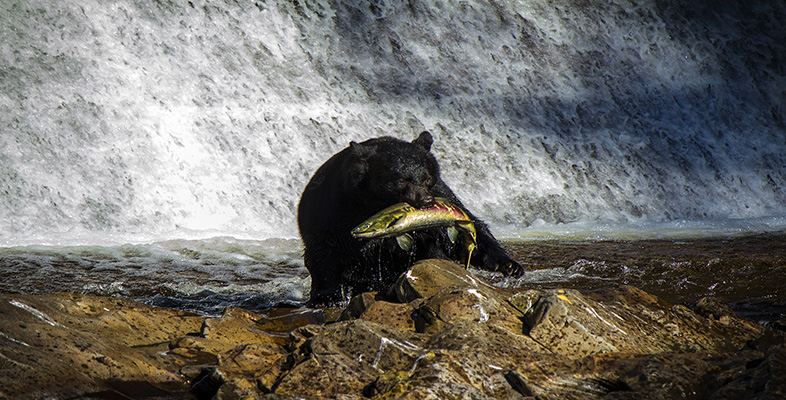6 The good family Procyonidae
As DA comments, this family is such an odd and varied collection that it doesn't have a common name [p. 170]. Its most familiar member (after which the family is named) is the raccoon, but the 19 species that comprise the family include mammals as diverse in habits and feeding preferences as the raccoon dog, the kinkajou and the red panda.
There is considerable taxonomic controversy about the members of the raccoon family - including the status of the red panda. With the kinkajou, early taxonomists saw a superficial resemblance to lemurs, so it was incorrectly classified as a primate. The fact that this animal is mentioned in a number of units reflects the inevitable shortcomings of any scheme that tries to divide up mammals into discrete types. Modern taxonomists classify the kinkajou (along with all other members of the raccoon family) as a carnivore and on those grounds it warrants a mention in S182_5 Studying mammals: meat eaters. But following the logic of the LoM chapters, its feeding habits locate it within the chapter on omnivores, alongside the olingo [p. 174], which is also a carnivore in taxonomic terms, though partial to fruit. On the basis of the kinkajou's feeding preferences, it is more accurately termed a frugivore, i.e. a fruit eater; its diet is 90% fruit and 10% leaves and nectar. Such complications remind us that ominvory must have developed independently many times in the course of mammalian evolution, which explains its patchy occurrence across the taxonomic groups. Where opportunities have arisen for the exploitation of food sources, mammals have shown a striking capacity to respond.
Activity 6
Reread LoM pp. 171-177 and describe the various foods eaten by different members of the family Procyonidae.
Answer
Raccoons apparently eat ripe raspberries, as well as worms, crayfish, small fish and frogs - all of which are hunted by making use of acute hearing and a very delicate sense of touch. (The tastes of the urbanised raccoons that you saw in the TV programme (35.55) must be even more varied.) The coati - and coatimundi - eat fruit, spiders, millipedes, lizards, nestling birds and mice, making great use of a long, narrow, mobile nose. The cacomistle and the olingo eat fruit, insects, birds and small mammals.
These procyonids can most definitely be described as omnivores. However, as I've indicated, it seems that the kinkajou is evolving towards dietary specialisation. The red panda - just like the seemingly unrelated giant panda - is committed to a specialist diet of bamboo. The fact that it also has the beginnings of a pseudo-thumb, enabling it to strip the leaves from bamboo stems efficiently, is a wonderful example of convergent evolution - whereby two species independently arrive at effectively the same solution to a common problem.
Question 10
Question: What other examples of convergent evolution have you encountered in other 'Studying mammals' units?
Answer
In the golden mole and the marsupial mole (S182_2), similar adaptations in unrelated animals have evolved, linked in each case with movement through sand. There are other examples in S182_7 Studying mammals: return to the water.
